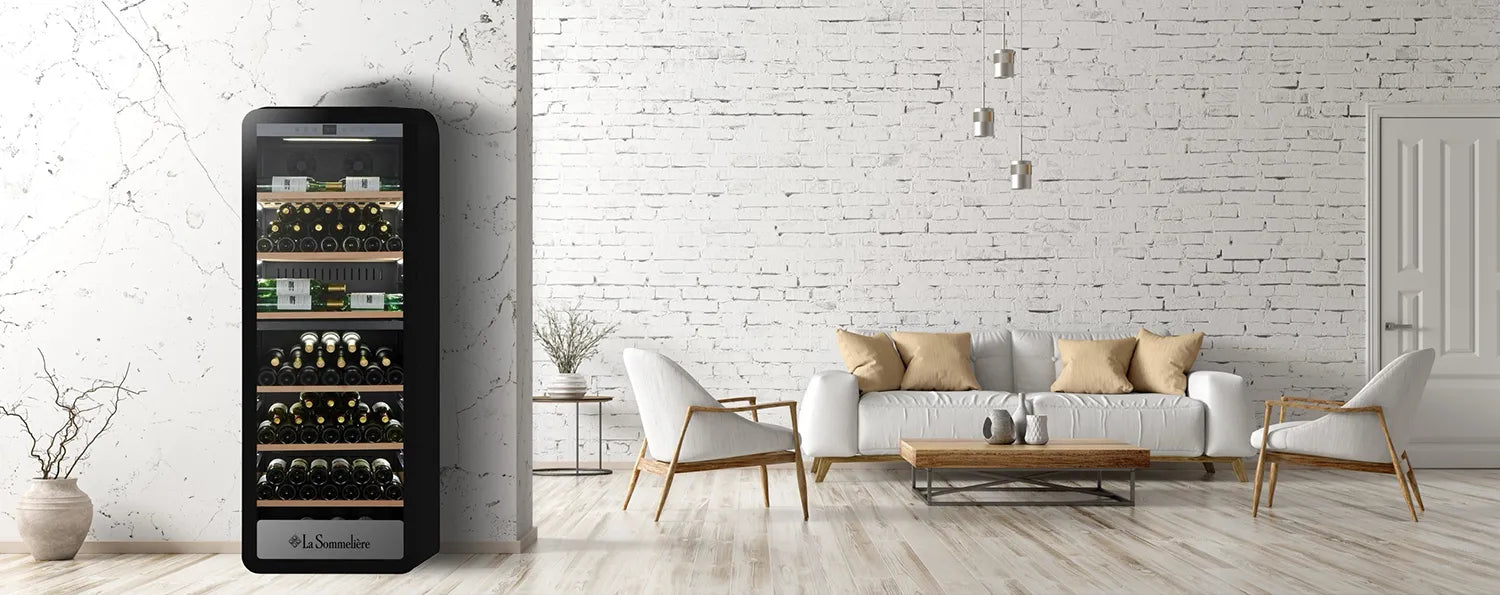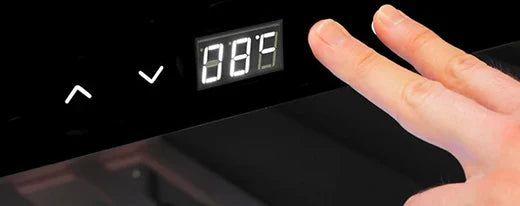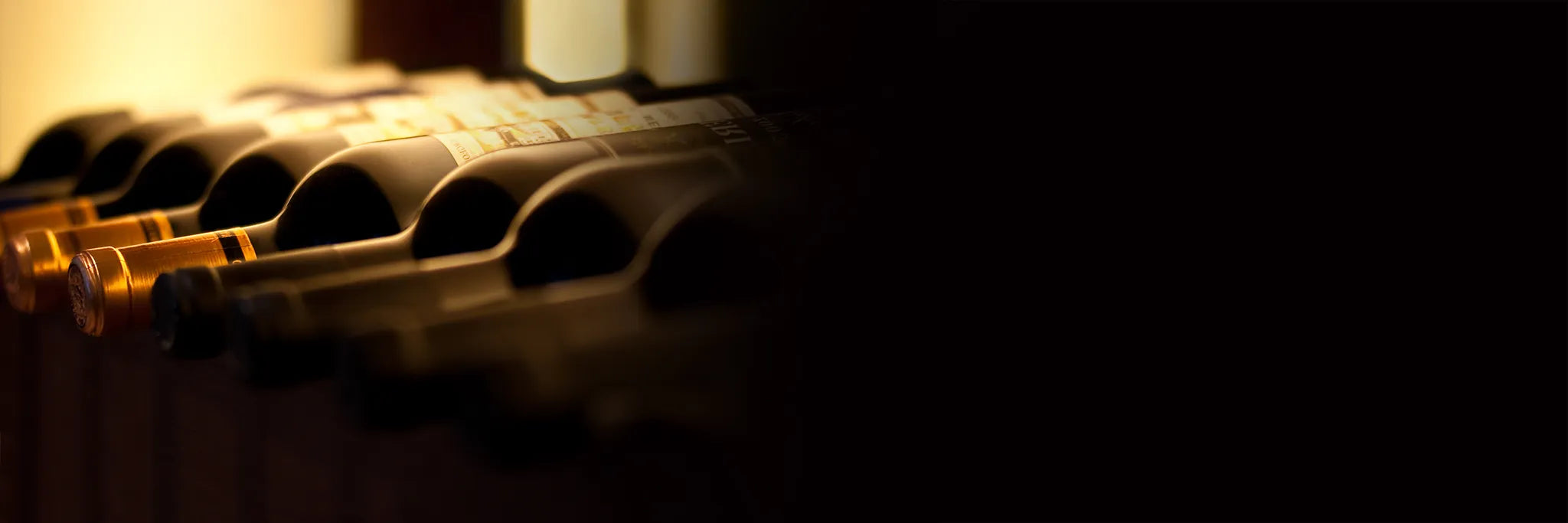Understand your wine fridge: Meet your new best friend!
Before you fill your wine cooler with treasures like Riesling, Pinot Noir, and other fine wines, it's important to understand how it works. Wine coolers are specifically designed to maintain specific temperature and humidity levels—essential for preserving the quality of your wine.
- Single-zone models: Ideal if you are looking for a compromise to store both white and red wines at a medium temperature, for example 14°C.
- Two-zone models: Perfect if you want to store your wines separately—for example, white wines at 10–12°C and red wines at 15–18°C. This allows all the aromas to develop optimally.
Especially in Germany, where energy efficiency plays a major role, choosing the right model helps to control energy consumption without compromising on quality.
The right position: The key to optimal wine enjoyment
A common mistake is neglecting the orientation of bottles. For wines with natural corks, it's ideal to store them horizontally . This keeps the cork moist, preventing oxidation and preserving the authentic flavor of your wine—especially important for wines like the long-aging Riesling.
- Modern closures: Bottles with screw or synthetic closures can also be stored upright, which further simplifies organization.
Categorization: Organizing your wine collection
Properly organizing your wine refrigerator is not only practical but also adds a special touch to your wine collection. Here are a few ideas for sorting your bottles:
- By wine type: Separate red, white, rosé, and sparkling wines. For example, you can group all the popular Rieslings together.
- By grape variety: Do you prefer Pinot Noir or Dornfelder? Sort your bottles by variety to quickly find your favorite.
- After consumption: Place the wines you drink frequently at eye level, while special treasures are stored on less accessible shelves.
- By origin or vintage: Sort by German wine regions such as Mosel or Palatinate or by vintage to give your collection an additional collector's character.
This structure not only makes it easier to find your favorite wines, but also makes every look in your wine refrigerator a pleasure.
Make optimal use of space and pay attention to every detail
Efficient use of space is especially important in German households, where space is often limited and energy prices are high. Here are some tips:
- Don't fill it to capacity: Only fill your wine cooler to about two-thirds to ensure optimal air circulation.
- Shelf adjustments: Some bottles, like the leaner Rieslings from the Mosel region, may require adjustable shelves—make sure everything fits perfectly.
- Easy accessibility: Store frequently used wines at eye level and ensure there is enough space between the bottles to avoid annoying movement.
Keep an eye on temperature control and inventory
The right temperature is the key to perfect wine storage. Here's an overview:
- White wines: Ideal between 10°C and 12°C.
- Red wines: Best stored at 15°C to 18°C.
- Sparkling wines: For long-term storage, 4°C to 6°C should be aimed for.
In addition to temperature, it's a good idea to label your bottles or shelves and keep an inventory—either digitally or on paper. This makes management easier, especially if you have a large or particularly valuable collection.
Care: Your wine refrigerator as a treasure
A well-maintained wine refrigerator ensures long-lasting wine enjoyment:
- Regular cleaning: Clean the shelves and interior every 3 to 6 months to avoid dust and unpleasant odors.
- Technical inspection: Check the cooling system and door seals regularly to prevent temperature deviations.
Organizing a wine refrigerator is much more than just storing bottles—it's an art that combines passion, science, and personal style. With these tips, you'll enjoy your wines in their full glory, nurture your collection, and honor German wine tradition. Here's to your health and many enjoyable moments!



